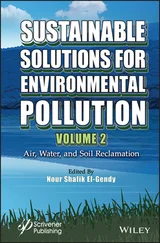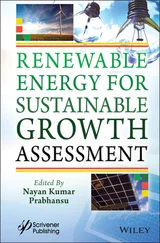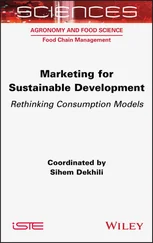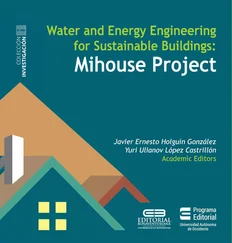In this effort, numerous attempts have been made, fixing specifically on toxic metal remediation from a ruined environment [15]. Treatment of contaminated soils with water, inorganic and organic acids, chemical and metal chelating agents such as EDTA are some of the most common techniques used for metal ion remediation from soils [16]. Techniques like thermal treatment, stabilization, excavation, and hazardous waste sites transportation of contaminated soil for landfill have several fundamental drawbacks since they cannot totally remediate metals, but only restrain them in the polluted soil and also cover huge land spaces [17]. A good metal complexing agent is required that possesses the properties of solubility, environmental stability, and a good complexation potential for the efficient removal of heavy metal ions from contaminated environments [18]. Biosurfactant application in both aqueous solutions and soils for metal ion removal have gained much attention in several studies [19, 20]. Biosurfactants that are surface‐active metabolite possess metal complexing properties, reported to be effective in remediation of heavy metal contaminated sites [13]. There are several reasons to assign biosurfactants as capable substitute agents for remediation purposes [4, 21]. These reasons are their better environmental compatibility and biodegradability, less toxic nature, and most importantly utilization of inexpensive agro‐based raw materials and organic wastes for their production [22]. The biosurfactants have a specific property to retain their activity even at extreme condition of high or low temperature, pH, and salt concentration. To date, a majority of informed biosurfactants are of microbial origin.
In recent years, scientific communities have paid attention to the economic aspects of biological processes and from here the concept of a “circular economy” has been introduced for biosurfactant production and its application. The circular economy strategy is focused on waste prevention or where it is generated it can be utilized in bioeconomical ways. In a circular economy, biorefining, which is the sustainable dispensation of waste biomass into a spectrum of marketable products and energy, play a crucial role. The biosurfactant synthesis and its bioeconomical utilization help in upliftment of a deteriorating environment condition, especially by heavy metals. Therefore, the aim of the present chapter is to provide information about biosurfactant production and their potential application in a bioeconomic way as environment‐friendly products in metal remediation.
4.2 Concept of Surfactant and Biosurfactant for Heavy Metal Remediation
The wide, extensive, and significant role of surfactants has been introduced in various sectors, such as environmental pollution mitigation, the petroleum industry, the detergent industry and food production facilities [23]. Due to the amphiphilic nature of surfactants, the surface tension in an oil–water interface decreased and hence water‐immiscible substance solubility increased. The surfactant environmental impacts and their easy disposal after utilization is of principal concern due to sundry and widespread utilization in the environment. This demanded screening of an environmentally friendly alternative to synthetic surfactants with equal efficiency. These classes of novel surfactants, having a biological origin, stated as “biosurfactant,” shows significant variation in terms of their chemical composition, structure, and mode of action. In present environmental remediation techniques, biosurfactants are gaining more attention due to their biodegradability and eco‐friendly attributes [24].
When focusing on biosurfactants of microbial origins, the extremophiles have gained more attention in the last few years as they can also show efficient remediation capacity in extreme punitive conditions. Their chemical structure involves hydrophilic polar moiety as oligo‐ or monosaccharide and proteins as well as polysaccharides or peptides and the hydrophobic moiety has unsaturated or saturated fatty alcohols or hydroxylated fatty acids [25]. The balance between the hydrophilic and lipophilic ends of biosurfactants grounds the hydrophilic and hydrophobic ends to be determined in substances that are surface active. The amphiphilic behavior of biosurfactants enables them to enhance the hydrophobic substance surface area as well as to give them modification ability in the microbial cell surface property.
The real breakthrough in the biosurfactant production and application research comes only after the knowledge of genetically engineered microorganisms because they have the capability of giving high yields. The detailed knowledge of genetics of the microorganisms plays a crucial role in this esteem. Previous studies on the molecular genetics and biochemistry of several biosurfactants revealed the operons, the enzymes, and the metabolic pathways for their extracellular production. One of the examples is surfactin – a cyclic lipopeptide biosurfactant. Its production occurred as a result of catalysis of a large multienzyme peptide synthase complex, i.e. surfactin synthase via a non‐ribosomal biosynthesis pathway. Similar enzyme complexes are responsible for the synthesis of other lipopeptides such as iturin, lichenysin, and arthrofactin. A very high level of compositional similarity has been shown by various lipopeptide synthesizing non‐ribosomal peptide synthetases (NRPSs). Psuedomonas species required plasmid‐encoded‐ rhl A, B, R, and I genes of an rhl quorum‐sensing system for production of glycolipid biosurfactants. The molecular genetics of biosynthesis of alasan and emulsan synthesized by Acinetobacter species, along with some other biosurfactants of fungal origin including mannosylerythritol lipids (MEL) and hydrophobins, have also been researched by scientists.
Microbes involved in biosurfactant production show their excellent efficiency in metal ion bioremediation from both aqueous and terrestrial environments. Some of the key characteristics of these biological compounds that play a crucial and target‐specific role during the remediation process are their higher surface activity with high tolerance to various environmental factors. The biosurfactants also can withstand from mean to extreme conditions, such as ionic strength, temperature, acidity or basicity of medium salt concentrations, biodegradable nature, demulsifying–emulsifying ability, anti‐inflammatory potential and antimicrobial activity.
The scientists and researchers have identified and characterized different types of biosurfactants produced from various biological sources [26–28]. The main criteria behind biosurfactant classification are their chemical structure, source of origin, antimicrobial activity, efficiency of pollutant removal from the environment, and surface tension reduction ability [29]. A variety of materials have been used by the microbial community as carbon and energy sources for their production. Microorganisms release tensio‐active substances as biosurfactants in the medium during degradation of hydrocarbons [30].
4.3 Mechanisms of Biosurfactant–Metal Interactions
Two main pathways have been identified for the desorption of metal ions from contaminated land using biosurfactants [31]. In the first pathway, there is a complex formation between the free, non‐ionic form of metal and biosurfactant molecules. In this interaction, using the principle of Le Chatelier, the solution phase activity of the metal ions is reduced and thus its desorption from the medium increases. In the second pathway, it is proposed that there is an accumulation of biosurfactants at the solid–solution interface and absorption of metal ions occurs as the interfacial tension reduces between the two.
Читать дальше












